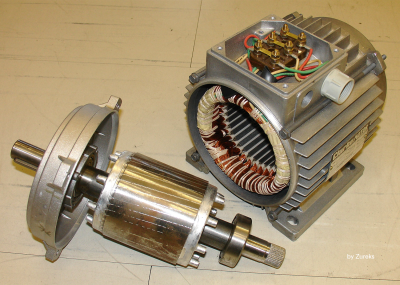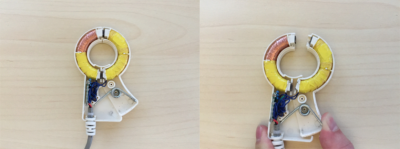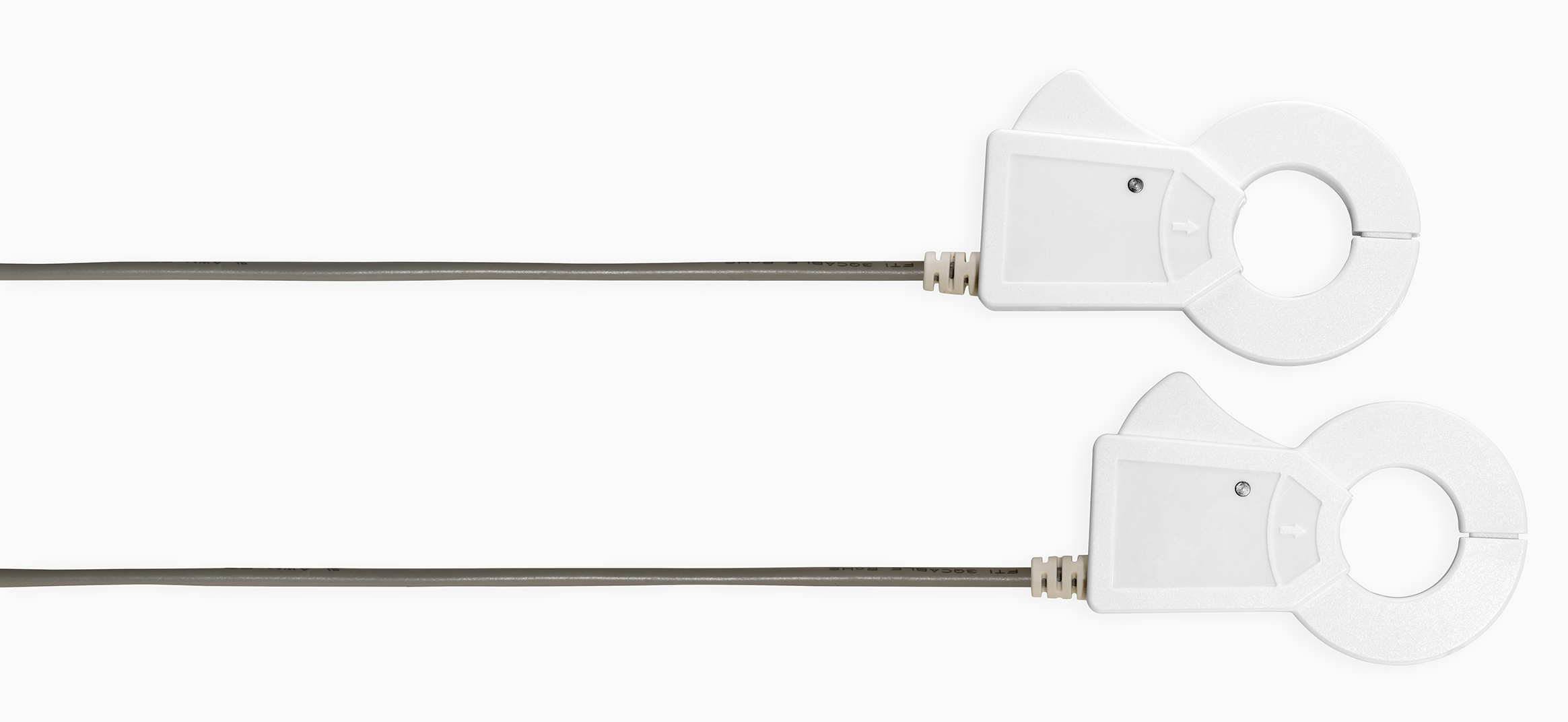Your Sense energy monitor measures your home’s electricity consumption with a simple installation process requiring no major modifications to your wiring. I’d like to explain how we can achieve that — and, for a bit of “fun,” to take a detour into the physics of electromagnetism. First, the main points:
- Sense continuously measures voltage and current, which it uses to compute power consumption and to distinguish the electrical signatures of your appliances.
- To measure current, we use a contactless current transformer (CT), which can be clipped onto your home’s main wires without disconnecting them.
- CTs take advantage of the relationship between electricity and magnetism to non-invasively measure the current flowing in a wire.
To measure electric power, we need to know two quantities: voltage and current. To use a common analogy, voltage is like water pressure; it’s the “force” which pushes electrons through electrical devices, like water pressure pushes water through a pipe. Current is like water flow; it measures the rate at which electrons move through the wire. Multiply the two together, and you get power.
We measure voltage by connecting to a single circuit breaker. Just like checking a bike’s tire pressure at the valve, the pressure at that one point is the same as the pressure everywhere. However, without a clever use of physics (not a Sense innovation, to be sure), measuring current is trickier. To measure all the electric current flowing to every device in your house, we would need to run all the electricity through our monitor, like it runs through your electric meter. Frankly, that just seems like a bit too much responsibility! We definitely prefer Sense installation to be less invasive than that, and thanks to electromagnetism, it can be.
Electricity and magnetism are so fundamentally linked that physics considers them not just related, but manifestations of the same phenomenon. The premise of their relationship is that electricity in motion (such as electrons moving in a wire, powering your tea kettle) produces a magnetic field, and a changing magnetic field produces an electric field (which can in turn push electrons down a wire. To power your tea kettle!) This interaction has profound implications even in the absence of electrons and wires, as the equations which link electricity and magnetism also form the classical theory explaining light itself.
This relationship between electricity and magnetism is used in electric generators to produce most of the world’s electricity. Motion created by turbines is used to rotate electrical conductors within magnetic fields, thus inducing electric current which is sent to customers. Conversely, a large portion of that generated electricity is consumed doing just the opposite, inside electric motors. In motors, electric current is used to make moving magnetic fields, which cause a shaft to rotate.

That was all just introduction. The star of this article is the transformer. Along with the generators that supply the power grid, transformers are key to power distribution. In a transformer, electric current passes through coils of wire wrapped around a magnetically “permeable” material (called a core), where it produces a changing magnetic field in that core. Rather than using that magnetic field to cause motion, like a motor, it passes through another coil of wire where it induces an electric current. The benefit of this arrangement is that by having a different number of turns in the “primary” coil and the “secondary” coil, the voltage can be changed up or down. As I discussed briefly in “What is Split-Phase Power,” more voltage means getting more done with less current. For long-distance power transmission, less current means thinner wires. So, with transformers, voltage from a generator can be raised to much higher voltages for long-distance transmission, then lowered to safer household levels for use.
This brings me to the current transformer, or CT. The physics of transformers doesn’t require the coil of wire to be tight. By passing a current-carrying wire through the center of a ring-shaped magnetic core, and winding that core with a long coil of wire, we effectively create a transformer! The wire passing through the core acts as a single turn of wire for our purposes, and the magnetic field its current produces is guided by the core through that secondary coil. In a CT, the secondary coil is wound many times. In the Sense CT, it has 3,000 turns. Due to the ratio of coils between the secondary and primary, the secondary will always carry 1/3,000 the current of the primary. When a Sense CT is placed around your home’s main wires, at their full current capacity of 200 amps, only 67 milliamps will flow in each CT — a very manageable current! We can measure that much more easily than if we were to measure the full 200 amps directly.

To me, the most important benefit of measuring current indirectly is the ease of installation. The core of the CT can be split into two parts for installation, and clamped together for measurement. That means that instead of disconnecting a home’s main wires to pass them through CTs, the CTs can simply be clipped around those wires without ever disconnecting them. This is important for a safe installation, because those mains are always live, even when the main breaker is shut off.
As always, it’s been fun to dive into the physics underlying Sense’s operation, and how we can make Sense installation simple and safe. Happy Sensing!
